How to Garden: Gardening Tips
Gardening offers a multitude of benefits that enhance the quality of life. It promotes physical activity, a sense of accomplishment, and a deeper connection with nature. As we age, one's approach to gardening can be adapted to suit your changing abilities. For example, using raised garden beds, lightweight tools, and ergonomically designed equipment can make gardening more accessible and enjoyable. Or just planting a few pots on your windowsill or patio can be an easy way to create a garden in small spaces. Here are some gardening ideas you can explore to cultivate a garden that is right for you.
Container Gardens
For those with limited space or mobility, container gardening or potted gardens offer a convenient and accessible way to enjoy the joys of gardening. Whether adorning a balcony, patio, or window sill, potted gardens can accommodate a wide variety of plants, from vibrant flowers to flavorful herbs.
- Choose the Right Containers: Select pots with adequate drainage holes to prevent waterlogging and root rot. Choose materials that suit your aesthetic preferences, such as terracotta, glazed ceramic, or lightweight plastic.
- Select Suitable Plants: Consider the amount of sunlight your pots receive and choose plants that thrive in those conditions. Group plants with similar water needs together to simplify care.
- Repotting for Growth: As your plants mature, you may need to repot them into larger containers to accommodate their expanding root systems.
Cultivate a Thriving Vegetable Garden
Vegetable gardening provides a rewarding experience, allowing you to enjoy the fruits of your labor in the form of fresh, nutritious produce. Whether you have a backyard plot or a few containers, growing your own vegetables can be a gratifying and enriching hobby.
- Select a Suitable Location: Choose a sunny spot with well-drained soil. Ensure the area receives at least six hours of direct sunlight per day.
- Plan Your Garden Layout: Consider the size and growth habit of each vegetable plant to ensure they have adequate space. Group plants with similar watering needs together.
- Amend the Soil: Enrich the soil with organic matter, such as compost or aged manure, to improve its nutrient content and drainage.
- Watering and Weeding: Water your plants regularly, especially during hot, dry periods. Remove weeds promptly to prevent competition for nutrients and water.
When deciding upon which vegetables to grow in your garden, consider hearty and low-maintenance vegetables such as tomatoes, peppers, zucchini, and leafy greens like spinach and kale. These vegetables are not only versatile in the kitchen but also thrive well in various climates, making them popular choices for seniors looking to create a sustainable and enjoyable garden experience. Carrots, potatoes and corn are also popular staples to grow.
Embrace the Fragrant Delights of an Herb Garden
Incorporating an herb garden into your gardening repertoire not only elevates the flavors of your culinary creations but also brings a touch of the Mediterranean right to your home. The aromatic delights of herbs like basil, oregano, thyme, and rosemary can transform your meals into culinary masterpieces.
- Choose a Sunny Location: Select a spot that receives at least six hours of direct sunlight per day. Herbs thrive in warm, well-drained soil.
- Planting Options: You can grow herbs in individual pots, raised beds, or directly in the ground. Group herbs with similar watering needs together.
- Regular Harvesting: Harvest herbs regularly to encourage new growth and prevent them from becoming woody. Pinch off the leaves or stems just above a set of leaves.
Whether you have a small balcony, a sunny windowsill, or a backyard plot, cultivating herbs in individual pots, raised beds, or directly in the ground is a rewarding and accessible endeavor. Regularly harvesting these fragrant treasures not only enhances your dishes but also promotes continuous growth.
Raised Bed Gardening
Raised bed gardening offers a convenient and accessible way to grow vegetables, herbs, and flowers. Elevated beds provide better drainage, prevent soil compaction, and make gardening more comfortable for those with limited mobility not to mention be easier on one's back. Here's a few options to get started that you can order from Amazon.
- Raised Beds: Build or purchase raised beds that use sturdy materials, such as wood, metal, or concrete blocks. Adjust the height to suit your needs and preferences. You might consider a raised bed herb garden that you can place on your patio for handy kitchen access.
- Fill the Beds with Soil: Fill the raised beds with a high-quality soil mix, ensuring it is well-draining and nutrient-rich. Keep in mind the type of plants you intend to use and research the best type of planting mix to use to help your plants thrive. Choose the right potting mix for the type of plants your wish to grow as flowers may need differnt nutrients than vegetables.
- Planting and Care: Plant your desired vegetables, herbs, or flowers in the raised beds. Follow the same care instructions as for traditional gardening methods. Be sure to consider the ideal location for your planter so so your plants have the proper sun exposure necessary for them to thrive.
Whether you choose potted gardens, vegetable gardens, herb gardens, or raised bed gardening, the joys and benefits of gardening are endless. Embrace the therapeutic touch of nature, cultivate a connection with your surroundings, and reap the rewards of homegrown goodness. Let gardening be your source of inspiration, rejuvenation, and overall well-being.
| |
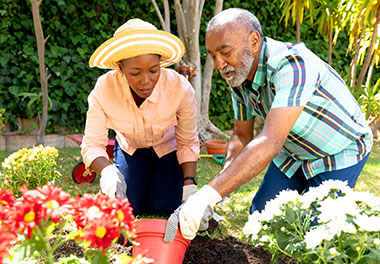
Photo by Wavebreak3 / Adobe Stock
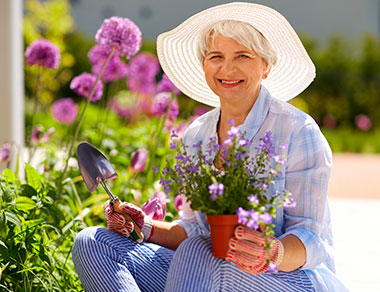
Photo by Syda Productions/ Adobe Stock
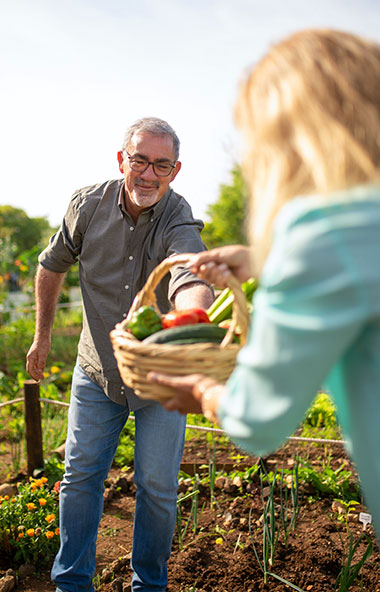
Photo by Kampus Production / Pexels
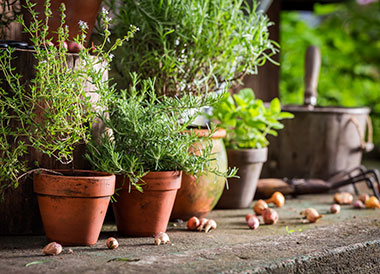
Photo by Shaiith / Adobe Stock
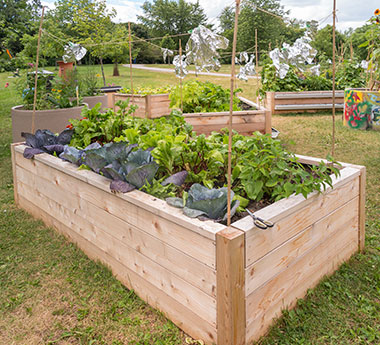
Photo by Alisonhancock/ Adobe Stock
|
 Photo by Wavebreak3 / Adobe Stock
Photo by Wavebreak3 / Adobe Stock Photo by Syda Productions/ Adobe Stock
Photo by Syda Productions/ Adobe Stock Photo by Kampus Production / Pexels
Photo by Kampus Production / Pexels Photo by Shaiith / Adobe Stock
Photo by Shaiith / Adobe Stock Photo by Alisonhancock/ Adobe Stock
Photo by Alisonhancock/ Adobe Stock